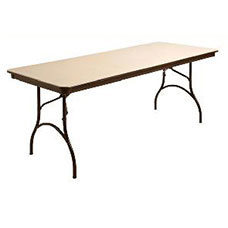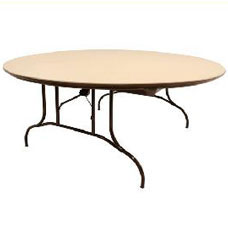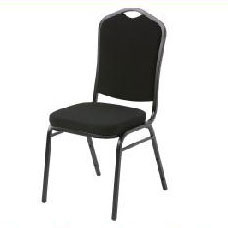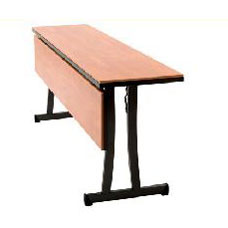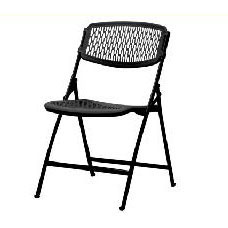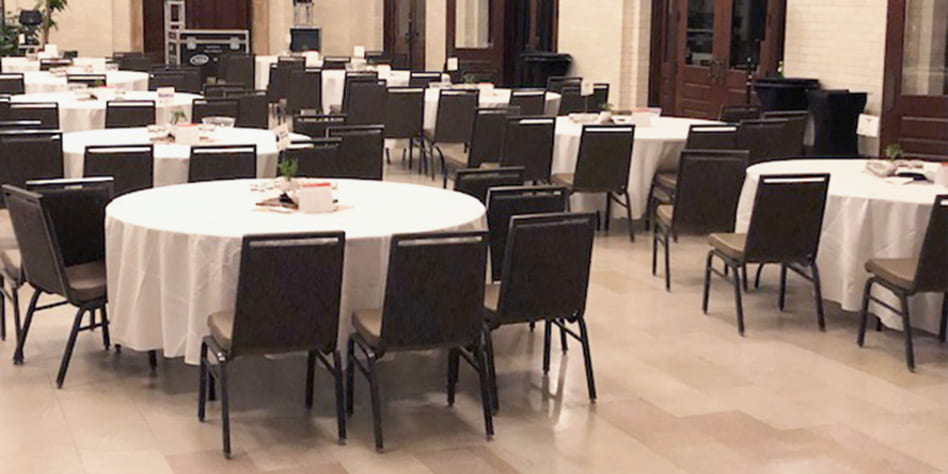
Why Room Layout Matters
The design and setup of a room has a profound impact on the success of an event. When people are comfortable, they’re more likely to enjoy themselves, stay longer, and return for future events. Two ways to improve comfort at any function is to first select the right furniture and then arrange that furniture in the most effective way for each type of gathering.
Here are some tips on how to effectively organize a room for two of the most popular types of events—banquets and panel discussions.
Banquets and Dinner Parties

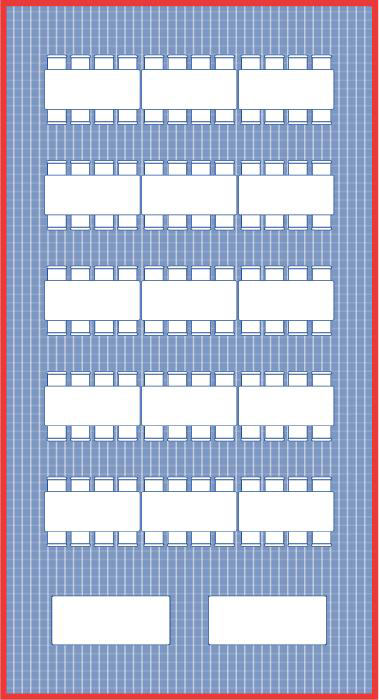
This is a typical room arrangement for banquets and dinners held at churches and community centers. Although this is a pretty common setup, it doesn’t provide the best use of the space or offer the best experience for guests. The table layout only allows guests to talk to those seated directly in front of or next to them. Plus, it’s difficult for guests to talk with those seated at other tables because they must walk all the way to one end of the table before crossing to another table.
Have you ever attended dinners with this room setup? Do you remember it being noisy and difficult to hear the person sitting across from you? That’s because everyone is facing one of two directions, so conversation isn’t dispersed throughout the room. Finally, this placement of the banquet tables proves incredibly difficult for those at the back of the room who must walk a long way to get to the food.

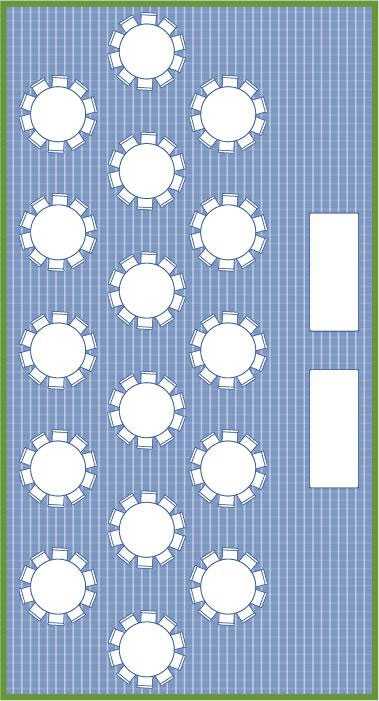
A more practical room arrangement uses round tables spaced throughout the room. This way, guests get to talk with everyone at their table (up to 10 people) instead of just the few sitting within earshot. This arrangement also makes it easier to mingle with guests at other tables.
In this layout, the banquet tables are now more accessible, especially when food is put against a center wall instead of at one end.
Finally, the room will be much less noisy and dinner conversation will be easier with people facing several different directions; dispersing sound throughout the room.
PRO TIP:
Make sure there are at least four feet between each table and 24 inches of open space behind each chair when it’s pushed out. This allows guests and serving staff to move about the room comfortably without bumping and backs of chairs.
Did You Know?
Round tables often seat the same number of people as rectangle tables. A 72″ round table can seat 10 people just like a 30″ x 72″ rectangle table.
Panel Discussions


When hosting a panel, it’s critical that speakers can address each other while still being visible to the audience. Many organizations set up panel discussions with the speakers seated in a straight line facing the audience. Most panelists will spend the discussion turned to one side or the other rather than facing the audience because this lineup makes it so difficult for them to see and hear each other. Plus, the moderator must sit on one end or the other, making it difficult for them to see all the panelists.

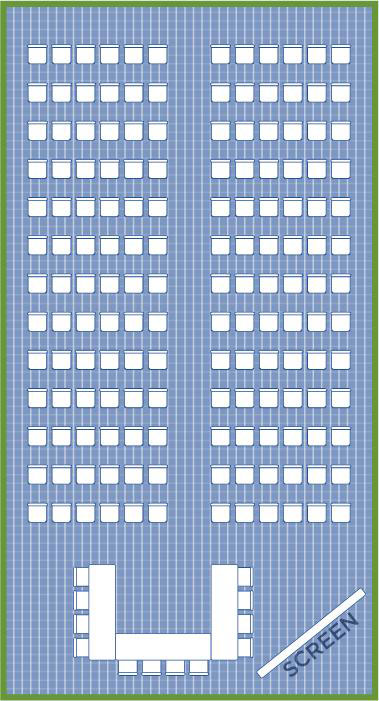
Put three tables in a U shape so that the panelists can talk directly to one another and still be visible to the audience. This set up helps put speakers at ease as well—they’ll feel like they’re having a discussion or meeting with each other rather than being put on display. Participants can see the moderator better, and the moderator can walk freely around the tables, stand to one side, or even stand in the middle of the tables.
PRO TIP:
If you have access to the right technology, put a camera in the center of the tables and play real-time video on a screen so that the audience members in the back can see the facial expressions of the speakers.
Having the right furniture and an effective layout can increase the functionality and feel of whatever space you’re in. Following these simple tips will help you improve attendance and make your events more successful than ever!
